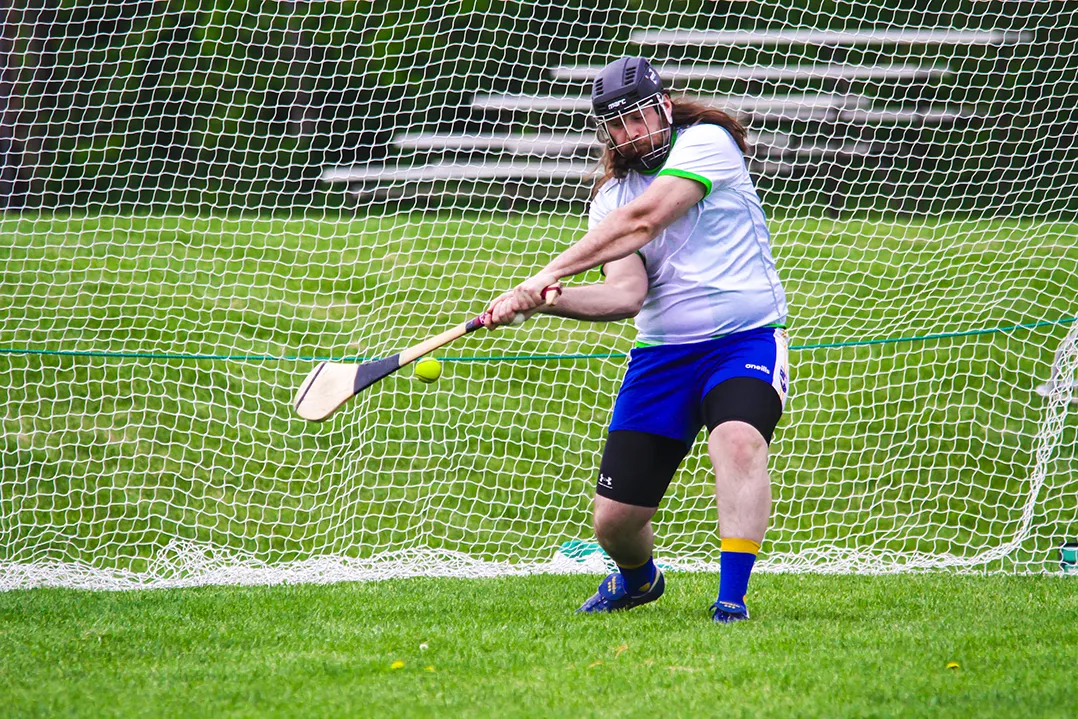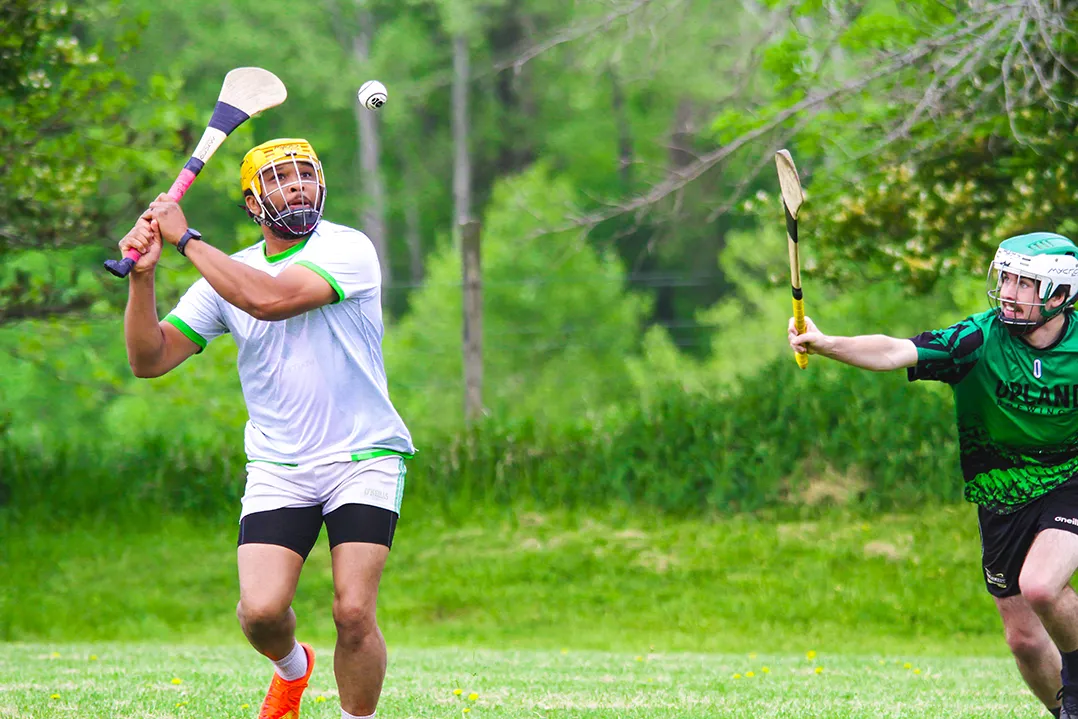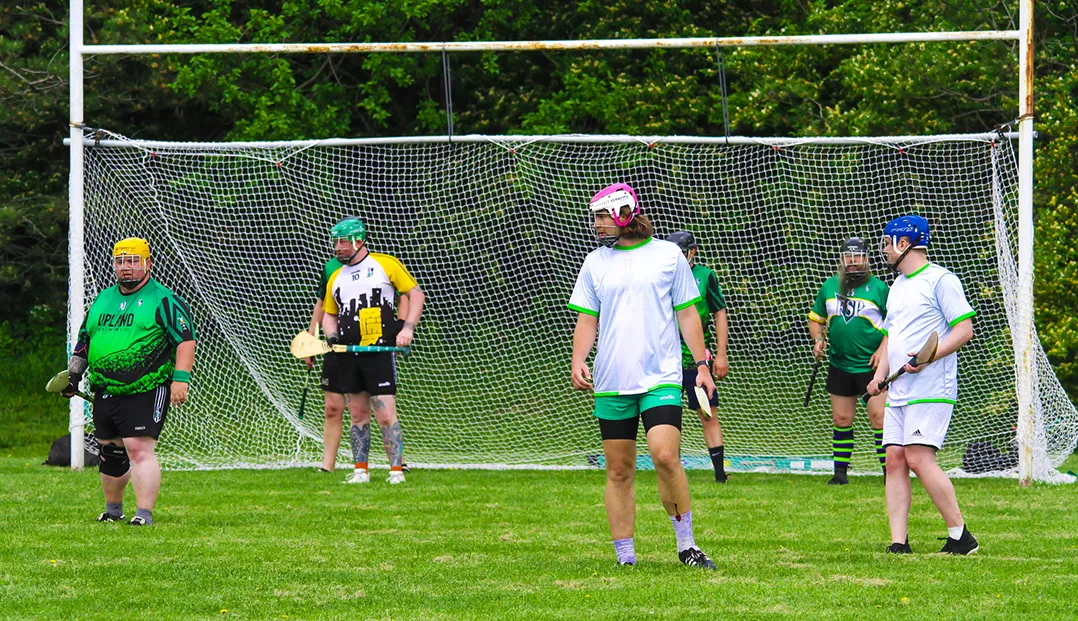Gaelic football has elements similar to American football, soccer, basketball and volleyball. But — while its origins are not clear — it appears to predate them all, with recorded games traced back to the late 1600s.
Ciaran Connery celebrates his Irish roots every Sunday, playing Gaelic football and hurling — another traditional Irish sport — with fellow members of the Indianapolis Gaelic Athletic Association at Eugene Burns Football Park on Glenn Road in Lawrence.
“If you ever meet anyone that plays hurling or Gaelic football, you’ll know it in two minutes, because it’s all we talk about,” he said. “It’s taken a very disproportionate amount of our lives.”
It’s taken even more of their lives than usual in recent months, because the IGAA is hosting a Gaelic games tournament, with teams traveling from as far away as Mexico to participate. The tournament is set for June 15 at the Indianapolis World Sports Park, 1313 S. Post Rd., with games starting at 9 a.m. and continuing throughout the day. Admission is free for spectators.
Andretta Erickson also plays Irish sports on Sundays and explained the rules of Gaelic football. She said it’s played on a grass field with a goal at either end, using a ball similar to a volleyball.
“The goal looks like a soccer goal with uprights on it,” she said. “If you hit it into the goal, it’s worth three points. If you hit it through the uprights, it’s one point. With Gaelic football, you can have the ball in your hands and you can take four steps (holding it) and then you have to do something with it. You can either pass it with your hands to your teammate, you can kick it to your teammate.”
Players also can dribble the ball and take four more steps, she said, or pass using a volleyball-style bump.
Hurling and the women’s version of hurling, camogie, are played with a stick and a smaller ball, more like a baseball.
Connery said the sticks look like field hockey sticks with ping-pong paddles on the end.
“I would say (hurling and camogie) look like lacrosse, mixed with field hockey mixed with full-contact baseball,” he said. “It has the same set of goals and the same field dimensions as Gaelic football fields — about 160, 170 yards long, about 90 yards wide — same H-shaped goals at either end.”
Scoring is similar to Gaelic football, with one point for getting the ball through the uprights and three for getting it into the net.
“They reckon it’s the fastest game played on grass in the world.” Connery said, noting that injuries are surprisingly uncommon. “It looks nuts when you see it for the first time. There’s sticks flying around the face and people are putting their bare hands up to catch the ball and people are swinging at the ball.”
All the Gaelic sports have a deep history in Ireland, Connery said. Back in the old country, teams represent their parishes and rivalries can be fierce.
“Passions can be inflamed, let’s say,” he said. “Especially when you’re playing against local rivals. I would say it’s kind of like, in terms of support and kind of the fervor, it might be like local high school basketball rivals here in Indiana.”
Erickson added that while Gaelic football, hurling and camogie are widespread and extremely popular in Ireland, there are no professional teams.
“You have the highest level (of play), but they’re still, you know, teachers, bankers, working and then doing all of this on their time off,” she said. “We also follow that, clearly — we just do it for fun and everyone has lives, everyone has other things to do, but we do what we can when we can with practice and playing in tournaments.”
The Indianapolis Gaelic Athletic Association started in 2005 with only a few teams, Erickson said. It built from there and started hosting tournaments in 2010. She said those early tournaments attracted nearby clubs from Chicago, Milwaukee and St. Louis, for example. Now it’s grown into something that attracts teams from near and far.
“This year, we have a team coming from Mexico City,” she said. “They’re a newer club. So, we’ve got the regional pull, plus an international pull this year, which is fun.”
Connery said exact accounts of how the local club started are “lost to the mists of time and made fuzzier by alcohol.” Very few members are recent immigrants like him, he said, and while some have a bit of Irish heritage, others have none.
Erickson said word-of-mouth has been the best recruiting tool, along with events such as trivia night.
“We do have one person that got recruited (because) they found one of our — the ball for hurling is called a sliotar,” she said. “They found one in the woods and it had our website on it, so they looked it up.”
Connery said the club is a great way for people to stay active and keep their competitive fire stoked as they mature. He added that it’s a good social opportunity.
“(We) tried to figure out how many marriages and babies have resulted from involvement in the club,” he said. “We’re into a couple of dozen, I think, marriages at this stage.”
Erickson noted that the Indianapolis club is one of the largest in the United States.
“We are very lucky that we can run our own league during the summer — we don’t have to go and play against other clubs from other cities,” she said. “Almost every Sunday morning during the summer, we play at the Eugene Burns Football Park (in Lawrence). We have four hours of games that we play, sometimes two fields running at the same time. And that is definitely the highlight of my week on Sunday mornings to go out to those fields.”
For more about the IGAA, visit /indygaa.com.
IF YOU GO
What: The 2024 Indy Invitational Gaelic games tournament
Who: 25 teams from the United States and Mexico, comprising between 200-300 players
When: Games start at 9 a.m. June 15, with multiple games throughout the day
Where: Indianapolis World Sports Park, 1313 S. Post Rd.
How: Admission is free for spectators
Other: Food and beverage trucks will be onsite








